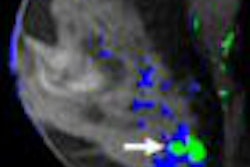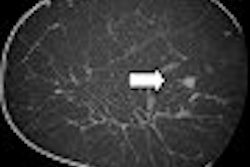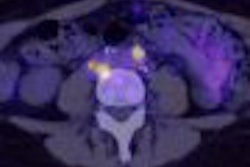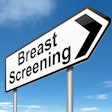For women with symptomatic fibroids, having the option of a minimally invasive procedure such as uterine artery embolization (UAE) that gives relief can make a big difference in their quality of life.
Dutch researchers for the multicenter, randomized clinical Embolization versus Hysterectomy (EMMY) trial, funded by the Netherlands Organization for Health Research and Development, found that both UAE and hysterectomy improved health-related quality of life for women with uterine fibroids and heavy menstrual bleeding, making embolization a good alternative to hysterectomy. They published their results online in Radiology (January 9, 2008).
Dr. Wouter J. K. Hehenkamp and colleagues at the Academic Medical Center in Amsterdam prospectively evaluated health-related quality of life outcomes for uterine artery embolization and hysterectomy up to 24 months after the intervention. They assessed mental and physical health, urinary and defecatory function, and overall patient satisfaction.
The group began enrolling patients in March 2002 and ended enrollment in February 2004. Of a total study cohort of 177 women, 88 were randomly assigned to undergo embolization, while 89 were assigned to have a hysterectomy. The mean age of participants was 44.6 years in the embolization group and 45.4 years in the hysterectomy group. Eighty-five percent of the participants had undergone one or more treatments for fibroids before enrolling in the study, and the majority had multiple fibroids.
Embolization was performed under local anesthesia, and polyvinyl alcohol particles with a size of 355 to 500 µm were used in all procedures. The particles were mixed with contrast material and saline, and injected into each uterine artery. After the procedure, the women were advised to stay in the hospital for at least one night of post-treatment care. As for the group that received hysterectomies, both supravaginal and total hysterectomies were included in the study.
During a two-year follow-up period, quality of life was measured six times: at baseline, six weeks after treatment, and six, 12, 18, and 24 months after treatment). The study used the following evaluation tools:
- Medical Outcome Study Short Form 36 (SF-36) mental component summary (MCS) and physical component summary (PCS) that assess physical function, role function, social function, bodily pain, mental health, vitality, and general health perceptions
- EuroQol 5D, which describes health in terms of mobility, self-care, usual activities, pain or discomfort, and anxiety or depression
- Health Utilities Index Mark 3, which assesses vision, hearing, speech, ambulation, dexterity, emotion, cognition, and pain
- Urogenital distress inventory (UDI) and incontinence impact questionnaire (IIQ), which evaluate the effect of symptoms associated with incontinence or genital prolapse on daily activities, emotions, and sense of well-being
- Defecation distress inventory (DDI), which assesses the presence and perception of defecation symptoms
At each follow-up, study participants were also asked to describe how satisfied they were with their treatment using these descriptors: very satisfied, satisfied, fairly satisfied, neither satisfied or unsatisfied, fairly unsatisfied, unsatisfied, or very unsatisfied. The women's satisfaction with their treatment outcomes was assessed with a seven-point Likert scale.
Scores for the first four tools improved in both groups at six months and afterward, while scores for the DDI improved at six months and afterward only in the embolization group. Women who had undergone embolization had higher PCS scores at their six-week postprocedure follow-up than those who had undergone hysterectomy.
The researchers did find that women in the hysterectomy group were more satisfied than those in the embolization group at 24-months follow-up, and women who were employed at enrollment in the study had higher PCS scores for both procedures at the 24-month follow-up.
Hehenkamp's group concluded that because the results for all the health-related quality of life instruments were essentially identical between six and 24 months after treatment, the study findings suggest that there is an enduring improvement in quality of life after both embolization and hysterectomy. The researchers did caution, however, that when new fibroids develop, especially in younger patients, health-related quality of life might decrease in the embolization group.
By Kate Madden Yee
AuntMinnie.com staff writer
February 20, 2008
Related Reading
Fibroid embolization is safe, effective long-term, January 21, 2008
UFE without standard aortography cuts radiation dose, May 18, 2007
Copyright © 2008 AuntMinnie.com




















